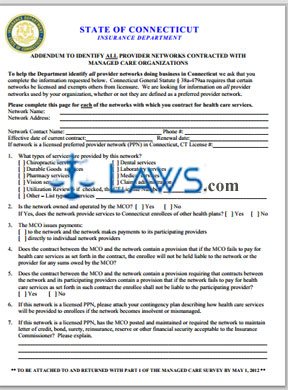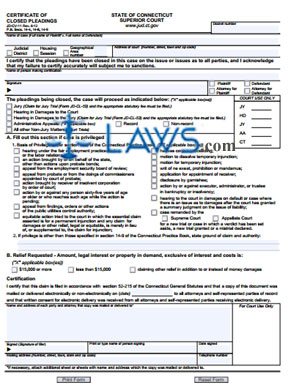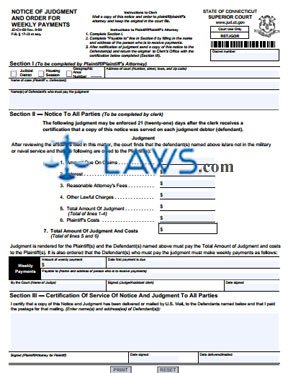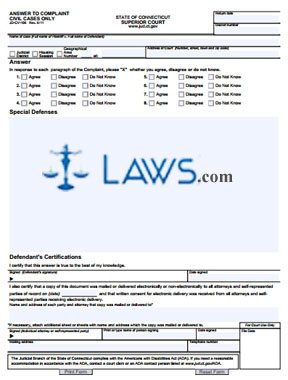2012 Consumer Report Card Addendum (all networks)

INSTRUCTIONS: CONNECTICUT ADDENDUM TO IDENTIFY ALL PROVIDER NETWORKS CONTRACTED WITH MANAGED CARE ORGANIZATIONS
Connecticut organizations use the form discussed in this article to identify all provider networks which are contracted with managed care. This document can be obtained from the website maintained by the government of Connecticut.
Connecticut Addendum To Identify All Provider Networks Contracted With Managed Care Organizations Step 1: Enter your network name on the first blank line.
Connecticut Addendum To Identify All Provider Networks Contracted With Managed Care Organizations Step 2: Enter your network address on the next two blank lines.
Connecticut Addendum To Identify All Provider Networks Contracted With Managed Care Organizations Step 3: Enter a contact name for your network on the fourth blank line.
Connecticut Addendum To Identify All Provider Networks Contracted With Managed Care Organizations Step 4: Enter a phone number for your network on the fifth blank line.
Connecticut Addendum To Identify All Provider Networks Contracted With Managed Care Organizations Step 5: Enter the effective date of your current contract on the sixth blank line.
Connecticut Addendum To Identify All Provider Networks Contracted With Managed Care Organizations Step 6: Enter the contract renewal date on the seventh blank line.
Connecticut Addendum To Identify All Provider Networks Contracted With Managed Care Organizations Step 7: If the network is a licensed preferred provider network in Connecticut, enter its state license number on the eighth blank line.
Connecticut Addendum To Identify All Provider Networks Contracted With Managed Care Organizations Step 8: On line 1, place a check mark next to all types of services provided by this network.
Connecticut Addendum To Identify All Provider Networks Contracted With Managed Care Organizations Step 9: On line 2, indicate with a check mark whether or not the network is owned and operated by the managed care organization. If yes, indicate with a check mark whether the network provides services to Connecticut enrollees of other health plans.
Connecticut Addendum To Identify All Provider Networks Contracted With Managed Care Organizations Step 10: On line 3, indicate with a check mark whether the managed care organization makes payments to the network, which distributes them to participating providers, or whether payments are made directly to individual network providers.
Connecticut Addendum To Identify All Provider Networks Contracted With Managed Care Organizations Step 11: Answer questions 4 through 7 as instructed.




